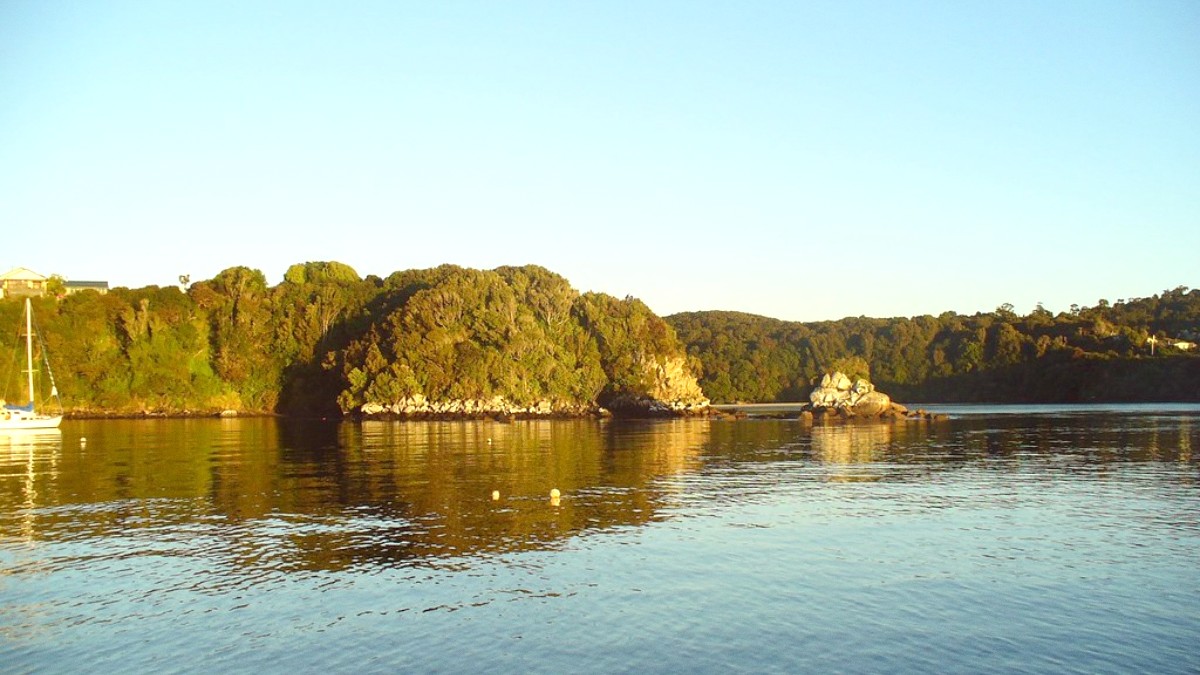
New Zealand
Rakiura National Park, Oban, Observation Rock, and Ulva Island are sites.
Ulva Island is a predator-free open sanctuary for native birds, accessed by water taxi from Oban.
Always plan your excursions and inform someone of your itinerary.
Limited visible archaeological sites. The museum provides insights into early Māori and European history through photos and tools.
Oban retains historic buildings like The South Sea Hotel, reflecting its past as a fishing and timber settlement. Stroll to see its enduring character.
Small, historic wooden church in Oban. Still in use, a quiet place for reflection. Simple architecture speaks to the island's pioneer spirit.
Various small memorials around Oban commemorate historical events, shipwrecks, or important community figures.
The museum discusses remnants of logging and whaling. Aspects are inferable from the landscape and historic photographs. No major military sites.
Stewart Island's untouched landscapes and abundant wildlife define its allure.
The island's dominant natural feature: mainly untouched native bush, encompassing vast stretches of wilderness.
Narrow strip of land offering views of two different bays. Accessible via specific tours, an unique geographical perspective.
Premier birdwatching destination, home to kiwi, kaka, tui, bellbird, stitchbird, weka, and various seabirds. Excellent for close observation.
Remote, expansive sandy beach on the west coast, famous for its significant wild kiwi population. Considered the best place to see wild Southern Brown Kiwi.
Dramatic cliffs, coves, and rock formations from boat tours. Paterson Inlet is home to seabirds, penguins, seals, and dolphins. Explore with GetYourGuide.
Halfmoon Bay, Golden Bay, Horseshoe Bay are easily accessible beaches in Oban. Suitable for gentle walks and enjoying coastal scenery.
Vast stretches of untouched native bush and diverse landscapes characterize this national park.
Paterson Inlet hosts seabirds, seals, and dolphins. Boat tours reveal the island's marine ecosystem.
Mason Bay offers opportunities to observe wild Southern Brown Kiwi (Rakiura Tokoeka) foraging on the beach.
Beyond the well-known sights, Stewart Island holds quiet, rewarding experiences.
Stewart Island itself remains a pristine, less-visited destination compared to mainland New Zealand.
The concept of "emerging" is relative to its already remote status. Its untouched nature is its enduring appeal.
The island offers exceptional chances for capturing unique moments.
Stewart Island maintains its remote charm and natural beauty.
Less crowded spots offer a more intimate experience of the island.
Stewart Island stands out for its pristine and less-developed nature.
Plan your visit effectively with insights and considerations.
Book popular tours, especially kiwi spotting and Ulva Island excursions, well in advance, specifically during peak season.
Consider guided options for Ulva Island and kiwi tours for expert commentary and enhanced viewing success.
Visiting during shoulder or low season results in fewer crowds at popular spots, allowing for more serene experiences.
Most accommodations and services in Oban are within walking distance, making it a pedestrian-friendly settlement.
Access to remote areas and DOC huts often involves water taxis or challenging, multi-day hikes.
The island has a limited road network; private vehicles are rare and often not needed for visitors staying in Oban.
Mobile phone coverage can be intermittent, especially outside of Oban. Internet access is available but may be slower than on the mainland.
Limited emergency services are available on the island. For remote excursions, carry a Personal Locator Beacon (PLB).
Preserving Stewart Island's pristine environment is a shared responsibility.
Always check the latest weather forecasts and Department of Conservation (DOC) alerts before embarking on any outdoor activity, notably multi-day hikes.
Weather conditions can change rapidly on Stewart Island, impacting safety and accessibility.
Discover lesser-known spots for an unique island experience.
This small, historic lighthouse offers a glimpse into maritime history.
A historic Māori settlement and early European whaling station.
Discover the island's secluded stretches of sand.
Ideal for those seeking quiet reflection away from any crowds.
Stewart Island boasts some of the clearest night skies.
A memorable experience for stargazers and photographers.
Connect with locals for genuine insights into the island's character.
These insights transform a visit into a exploration.
Stewart Island is a pristine, less-visited destination, offering a genuine sense of escape and natural wonder.
From sweeping coastal vistas to intimate wildlife encounters, the island provides endless opportunities for capturing stunning images.
For truly hidden spots, engaging with locals can unlock insights into secluded areas rarely seen by casual visitors.